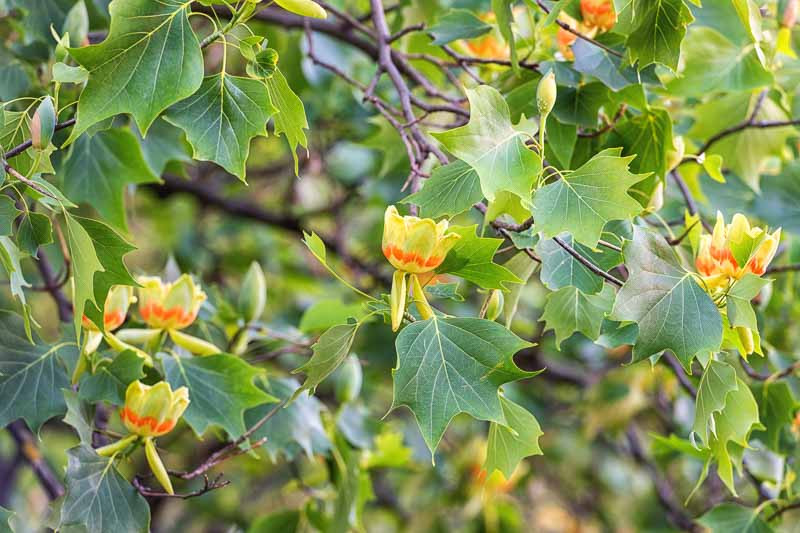Tulip Poplar: A magnificent Shade Tree for Your Landscape
The Tulip Poplar, scientifically known as Liriodendron tulipifera, is a fascinating species with a blend of unique characteristics and historical significance. Native to eastern North America, it belongs to the Magnolia family.
Distinctive Flowers: The Tulip Poplar is named for its flowers, which resemble tulips. These greenish-yellow blossoms with an orange flare at the base appear in late spring and are a stunning sight, although they’re often high up in the tree and not easily seen from the ground.
Impressive Height: One of the tallest native trees in North America, it can reach heights of 70 to 90 feet (21 to 27 meters), making it a popular choice for ornamental planting in large spaces.
Rapid Growth: Fast-growing, especially in its youth, It is a popular choice for reforestation and landscaping projects.
Long Lifespan: Tulip Poplars can live for several hundred years. Some specimens are believed to be over 500 years old.
Unique Leaf Shape: The leaves are quite distinctive, with a unique four-lobed shape and a notched tip, adding to the tree’s ornamental value.
Fall Foliage: In the fall, the leaves of the Tulip Poplar turn a brilliant yellow, making it a valuable species for adding autumnal color to landscapes.
Wood Uses: The wood of the Tulip Poplar is light and strong and has been historically used for various purposes, including furniture, canoes, and even as a substitute for pine in the construction of the famous ‘Liberty Ships’ during World War II.
Historical Significance: Native Americans used the Tulip Poplar to make dugout canoes. George Washington planted Tulip Poplars at Mount Vernon, which still stands today.
Wildlife Habitat: The tree provides a habitat for a variety of wildlife. Its blossoms attract pollinators such as bees, butterflies, and hummingbirds. It is also a significant host plant for several butterfly species, notably the Eastern Tiger Swallowtail. The Tree is generally considered non-toxic to humans and animals.
State Tree: The Tulip Poplar is the state tree of Indiana, Kentucky, and Tennessee, reflecting its significance in the history and natural landscape of these regions.

